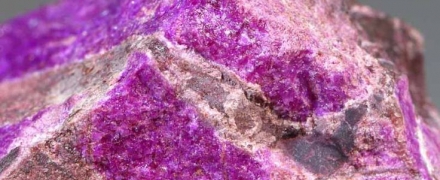open 10 am - 7 pm
laboratory is closed
Корундо-Берилл

В геммологической практике бывают весьма увлекательные случаи с диагностикой ювелирных вставок. Так при идентификации вставки из непрозрачного берилла (с показателями преломления 1,578-1,587, что вполне соответствует заявленному минеральному виду), рамановская спектрометрия (с возбуждающим источником на длине волны 532 нм) при множественных измерениях с разных позиционных положений исследуемого образца дала спектры характерные для корунда (с пиками на 4363 и 4393 см-1). Такое несовпадение результатов двух методов диагностики никак не способствует определению минерала. Поэтому после дополнительной (более тщательной) очистки образец был повторно визуально изучен при дополнительном освещении и при более сильном увеличении (до 120Х). При этом среди включений были установлены амфибол, слюдистые минералы и гематит, но включения сколь либо напоминающие корунд отсутствовали.
Однако была выявлена особенность – высокая микротрещиноватость и пропитка вставки с целью фиксации сырья при огранке.
После повторной диагностики – результат остался без изменений. Однако, после вывода линий корунда за пределы диапазона измерений и повторного проведения снятия рамановского спектра результат оказался вполне соответствующий бериллу (196, 262, 400, 700, 1020, 1067, 3611 см-1).
Вероятно, при огранке камня использовался корундовый или корунд-содержащий абразив, а наличие микрополостей, заполненных клеящим составом способствовала удержанию частиц корунда, который в виду своей более сильной люминесценции полностью заглушал спектральные люминесцентные линии берилла.
Но помимо редкости цвета и высокой стоимости таких камней, многие розовые камни выделяются одной замечательной особенностью – они проявляют плеохроизм, то есть в зависимости от положения осмотра камня он может иметь дополнительные оттенки – оранжевый или пурпурный.
Currently, gemstones are produced by two fundamentally different technological methods - the High Pressure - High Temperature method (“HPHT”, High-pressure & High-temperature) and the Chemical Vapor Deposition (“CVD”, Chemical vapor deposition) method. The "HPHT" method is the most tested classical synthesis method, which can be used both carbon deposition on diamond from flux melts and catalytic reactions. In "CVD" synthesis, diamond growth occurs on a seed during carbon deposition mainly from a gaseous medium at relatively low temperatures and pressures.
Jewelry and precious stones are just such a category of goods, when buying which you need to pay attention to many criteria.
Sogdianite is a rather rare mineral and more often it can be found as a collection material (moreover, in systematic collections), and it is extremely rare in jewelry.
Tauson Lev Vladimirovich (October 27, 1917 - November 23, 1989), an outstanding Soviet geologist and geochemist, member of the USSR Academy of Sciences (since 1981).






